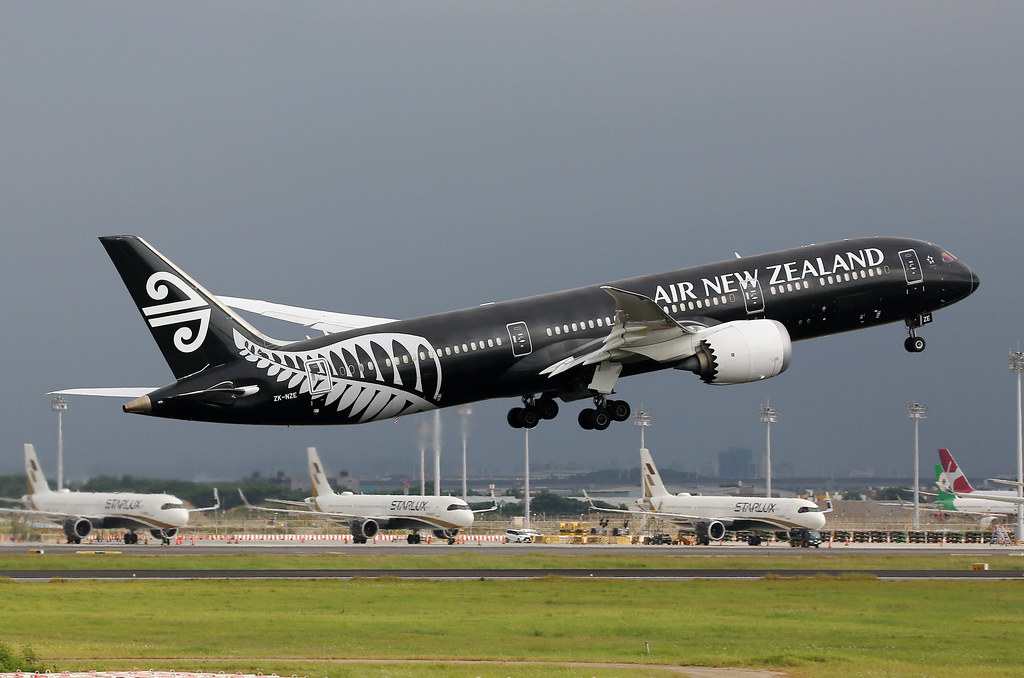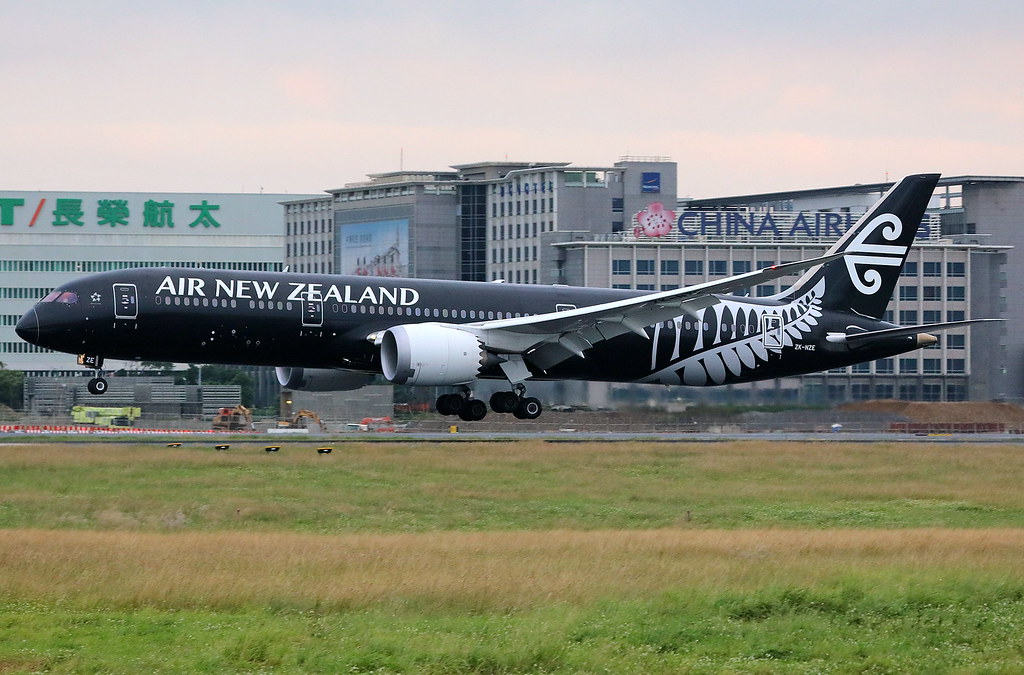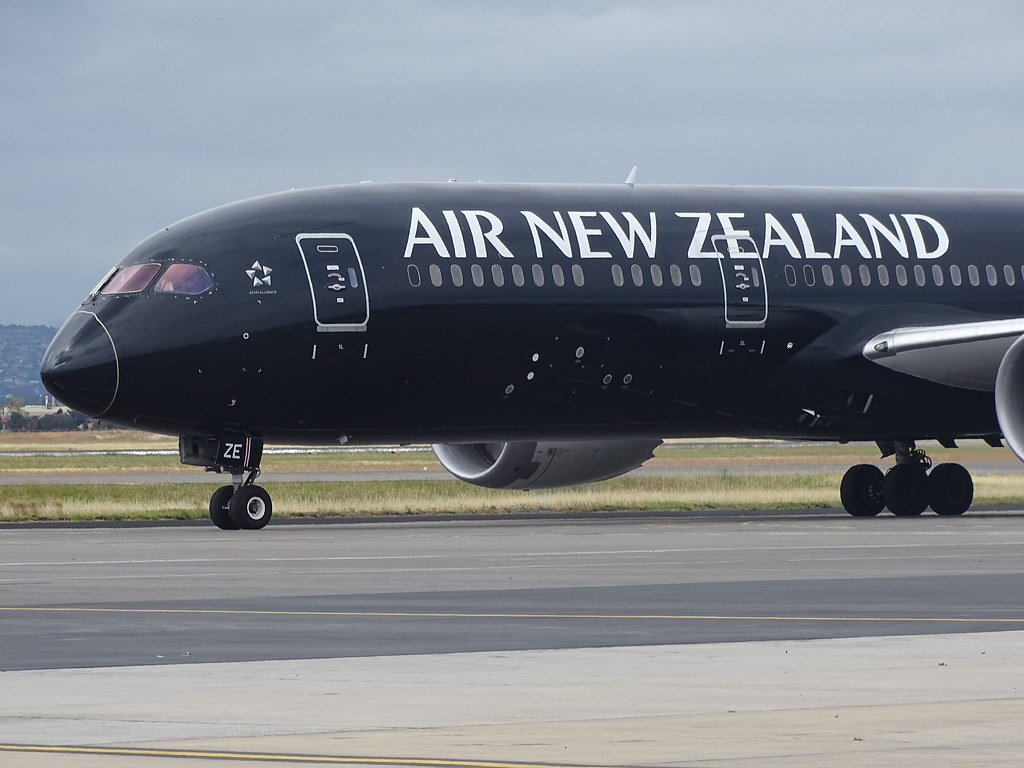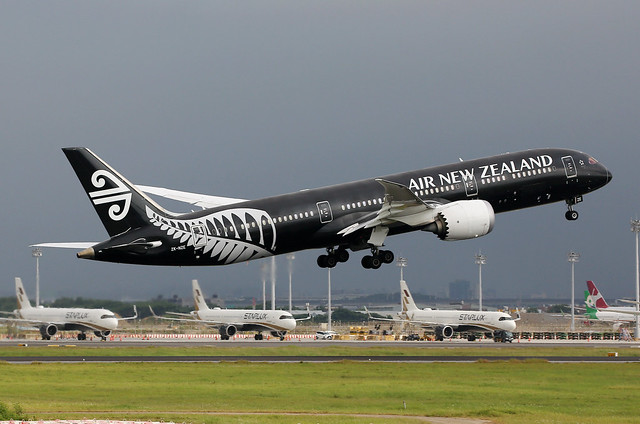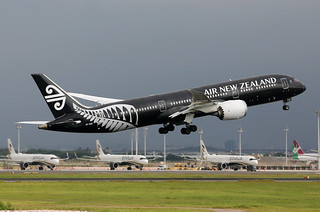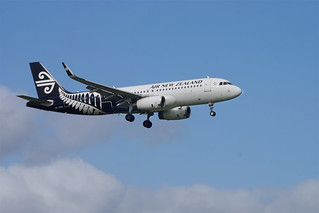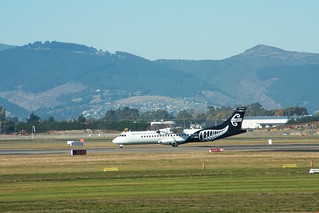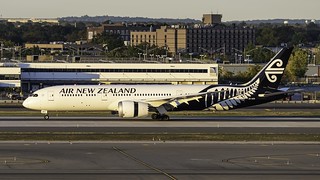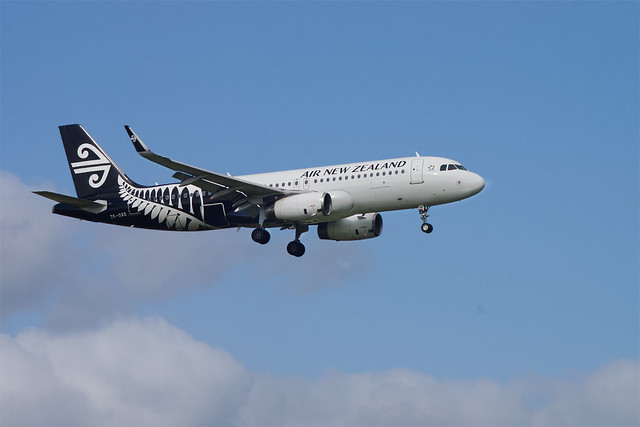ANZ B789 near Auckland on Dec 5th 2017, engine shut down in flight
Last Update: November 11, 2020 / 23:08:55 GMT/Zulu time
Incident Facts
Date of incident
Dec 5, 2017
Classification
Incident
Airline
ANZ Air New Zealand
Flight number
NZ-99
Departure
Auckland, New Zealand
Destination
Tokyo Narita, Japan
Aircraft Registration
ZK-NZE
Aircraft Type
Boeing 787-9 Dreamliner
ICAO Type Designator
B789
The airline reported the captain elected to shut one of the engines down as a precaution and returned to Auckland.
Passengers reported the aircraft began to shake violently, there were weird noises, clunking sounds, and electrical power went temporarily out. The captain subsequently announced a minor technical problem with one of the engines. After landing fire fighters sprayed the left hand side of the aircraft.
New Zealand's TAIC opened an investigation into the occurrence described as engine anomaly.
On May 3rd 2018 the TAIC released a preliminary report also including another similiar occurrence, see Incident: ANZ B789 near Auckland on Dec 6th 2017, engine problem.
The TAIC reported: "In both cases an initial borescope inspection found that a turbine blade in the intermediate pressure turbine (IPT) module had fractured and separated from the IPT disc. Features were identified that indicated corrosion fatigue cracking had occurred. In the first occurrence the released blade caused significant damage to the IPT and low-pressure turbine modules. Small pieces of the turbine and stator blades were ejected through the exhaust nozzle and struck the leading edge of the right horizontal stabiliser. Some pieces also chipped the underside of the wing and the side of the fuselage towards the rear, but these did not cause significant damage. The damage in the second occurrence was mainly confined to the IPT module." subsequently stating: "The incidents in December 2017 with engine numbers 10231 and 10227 occurred at 1,545 and 1,453 cycles respectively, up to 12% earlier than the CFL-predicted cycles for the removal of the engines for modification. Therefore the CFL model failed to provide the intended conservative reserve margin before failure."
In April 2018 the FAA and EASA independently released two different Airworthiness Directives, see News: EASA and FAA issue Airworthiness Directives on Boeing 787 engines.
On Nov 12th 2020 New Zealand's TAIC released their final note deciding to close down the investigations into both occurrences stating:
Being satisfied on the facts before it that:
- its inquiries and report published on 3 May 2018 identified the salient safety issues in these occurrences
- the manufacturer has taken safety actions through its programme of blade replacement that have addressed the safety issues
- further lines of inquiry are unlikely to identify any further circumstances that have significant implications for transport safety
- further lines of inquiry are unlikely to allow the Commission to establish any further findings or make further recommendations that may increase transport safety
- further lines of inquiry are unlikely to contribute to the Commission’s purpose of avoiding similar occurrences in the future.
The Commission resolves to now close its inquiries into these two occurrences.
Aircraft Registration Data
Incident Facts
Date of incident
Dec 5, 2017
Classification
Incident
Airline
ANZ Air New Zealand
Flight number
NZ-99
Departure
Auckland, New Zealand
Destination
Tokyo Narita, Japan
Aircraft Registration
ZK-NZE
Aircraft Type
Boeing 787-9 Dreamliner
ICAO Type Designator
B789
This article is published under license from Avherald.com. © of text by Avherald.com.
Article source
You can read 2 more free articles without a subscription.
Subscribe now and continue reading without any limits!
Read unlimited articles and receive our daily update briefing. Gain better insights into what is happening in commercial aviation safety.
Send tip
Support AeroInside by sending a small tip amount.
Related articles
ANZ B789 at Apia on Sep 27th 2025, rejected takeoff
An ANZ Air New Zealand Boeing 787-9, registration ZK-NZE performing flight NZ-993 from Apia (Samoa) to Auckland (New Zealand), was accelerating for…
ANZ B789 at Auckland on Sep 10th 2016, deflated tyre indication
An ANZ Air New Zealand Boeing 787-900, registration ZK-NZE performing flight NZ-9 from Honolulu,HI (USA) to Auckland (New Zealand) with 286…
ANZ B789 at Perth on Nov 27th 2014, lightning strike
An Air New Zealand Boeing 787-900, registration ZK-NZE performing flight NZ-175 from Auckland (New Zealand) to Perth,WA (Australia), was descending…
ANZ A320 at Auckland on Nov 15th 2025, hydraulic problems
AN ANZ Air New Zealand Airbus A320-200, registration ZK-OXD performing flight NZ-637 from Auckland to Queenstown (New Zealand), was climbing out of…
ANZ A20N at Sydney on Oct 24th 2025, hydraulic failure
An ANZ Air New Zealand Airbus A320-200N, registration ZK-NHC performing flight NZ-221 from Christchuarch (New Zealand) ti Sydney,NS (Australia), was…
ANZ AT72 at Invercargill on Oct 2nd 2025, bird strike
An ANZ Air New Zealand Avions de Transport Regional ATR-72-212A, registration ZK-MVE performing flight NZ-5704 from Invercargill to Christchurch (New…
ANZ B789 near Sydney on Aug 14th 2025, fuel discrepancy
An ANZ Air New Zealand Boeing 787-9, registration ZK-NZR performing flight NZ-175 from Auckland (New Zealand) to Perth,WA (Australia), was enroute at…
Newest articles
Airjet Angola E145 at Kolwezi on Nov 17th 2025, touched down before runway, aircraft in flames
An Airjet Angola Embraer ERJ-145, registration D2-AJB performing flight MBC-100 from Lubumbashi to Kolwezi (DR Congo) with 26 passengers and 3 crew,…
ANZ A320 at Auckland on Nov 15th 2025, hydraulic problems
AN ANZ Air New Zealand Airbus A320-200, registration ZK-OXD performing flight NZ-637 from Auckland to Queenstown (New Zealand), was climbing out of…
Subscribe today
Are you researching aviation incidents? Get access to AeroInside Insights, unlimited read access and receive the daily newsletter.
Pick your plan and subscribePartner

ELITE Simulation Solutions is a leading global provider of Flight Simulation Training Devices, IFR training software as well as flight controls and related services. Find out more.
SafetyScan Pro provides streamlined access to thousands of aviation accident reports. Tailored for your safety management efforts. Book your demo today
AeroInside Blog
Popular aircraft
Airbus A320Boeing 737-800
Boeing 737-800 MAX
Popular airlines
American AirlinesUnited
Delta
Air Canada
Lufthansa
British Airways
